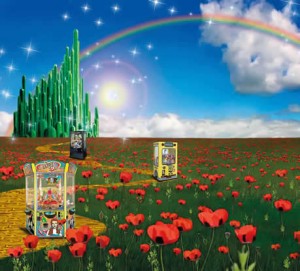While the pay-to-play industry continues to evolve to accommodate ever-changing trends there remains one constant, the popularity of cranes and pushers


Considered by many as staples of the industry, it could be argued that the value of cranes and pushers has even increased during the recent recession, thanks to the demand for perceived value for money from players and as locations continue to close, there are operators out there that have pushers and cranes to thank for their very existence. As Harry Levy’s Colin Mallery puts it: “Who would have thought the two pence would be so important?”
We all know the main reason for their success is their simplicity and you don’t need me (writes Helen Fletcher) to tell you that for this reason they appeal to the young, old and every age in between. They also provide a different challenge each time they are played thanks to the movement of the coins and toys. As a player, every action has a knock-on effect and they can immediately see the results of the previous attempt, encouraging them to improve on their performance and ultimately win the prize.
“These games don’t require great skill to play and enjoy while still allowing for players to attempt different strategies,” UDC’s Matt Bland tells InterGame. “This appears to be a universal appeal and in some territories operators even go as far as to provide token dispensing machines to enable customers to play coin pusher games where there is no suitable denomination of coin or where they use swipe cards for other games for operational or legal reasons.
“Pushers and cranes have become staple products and must be included in any FEC/game room installation. Quite simply, without these games the experience is incomplete and operators are leaving money on the table. At UDC we firmly believe that cranes and pushers are excellent value for money both for players and for operators and will continue to be for the foreseeable future even in hard economic times. They are both exciting and inexpensive to play compared with other entertainment options.”
This feature can be read in full in the February 2012 issue of InterGame magazine.

